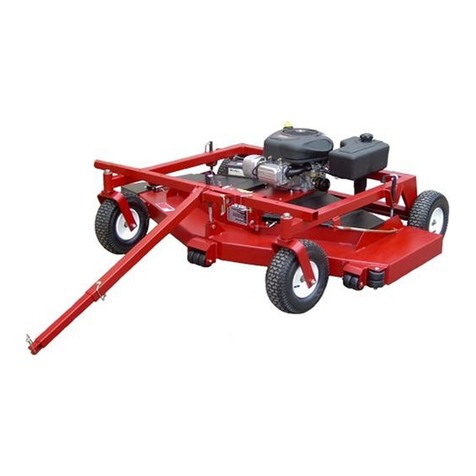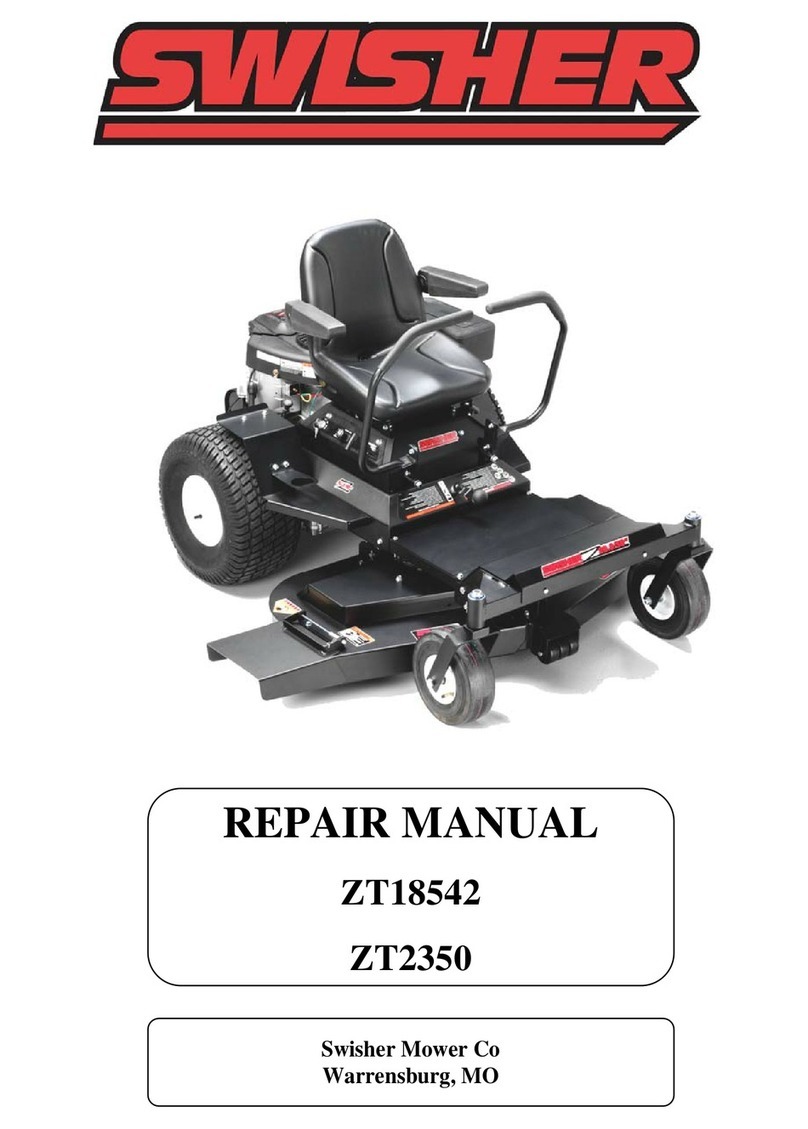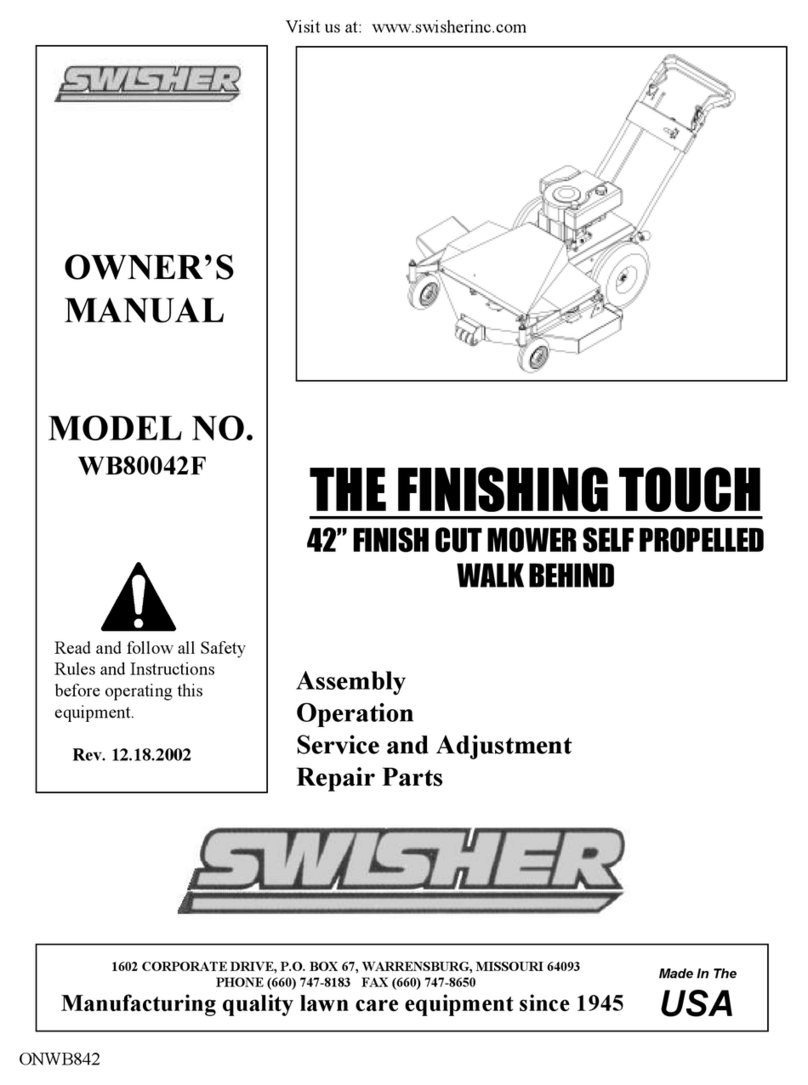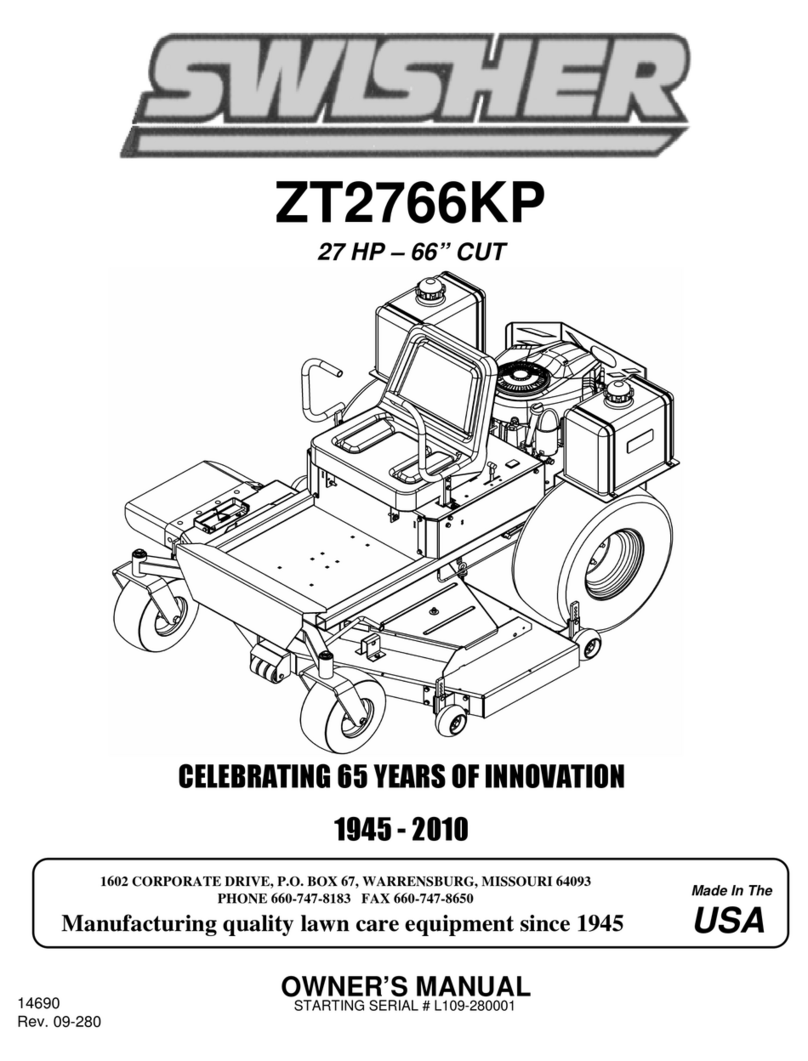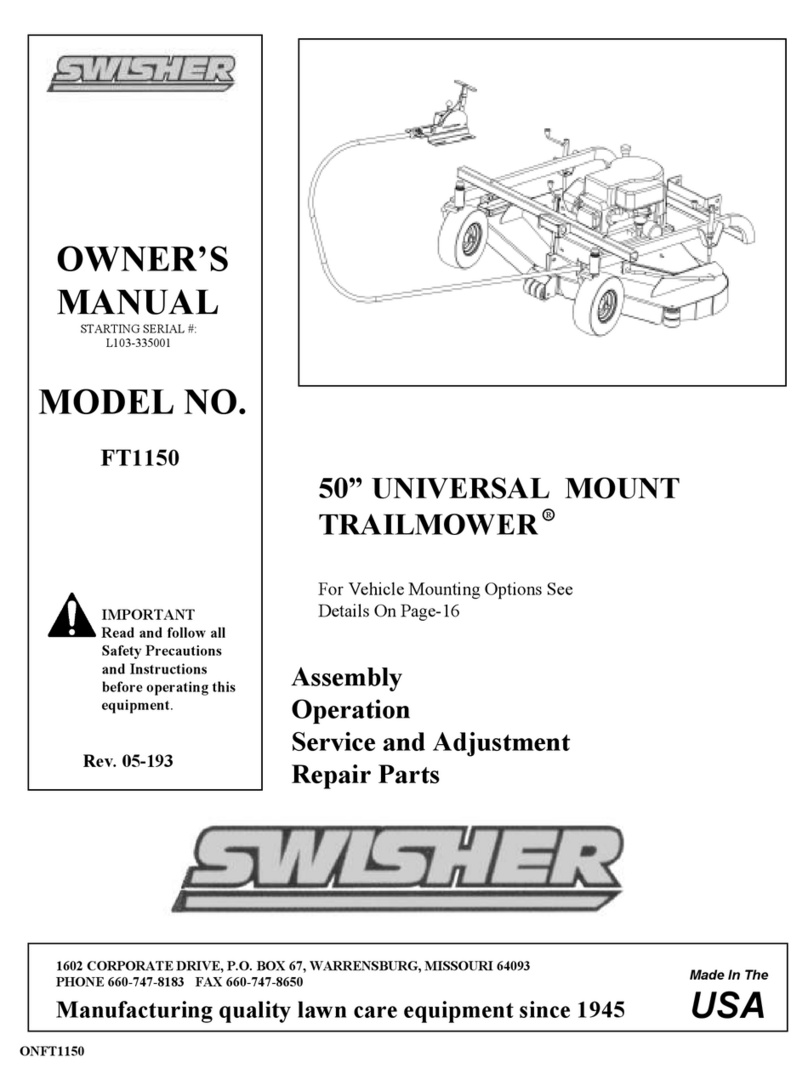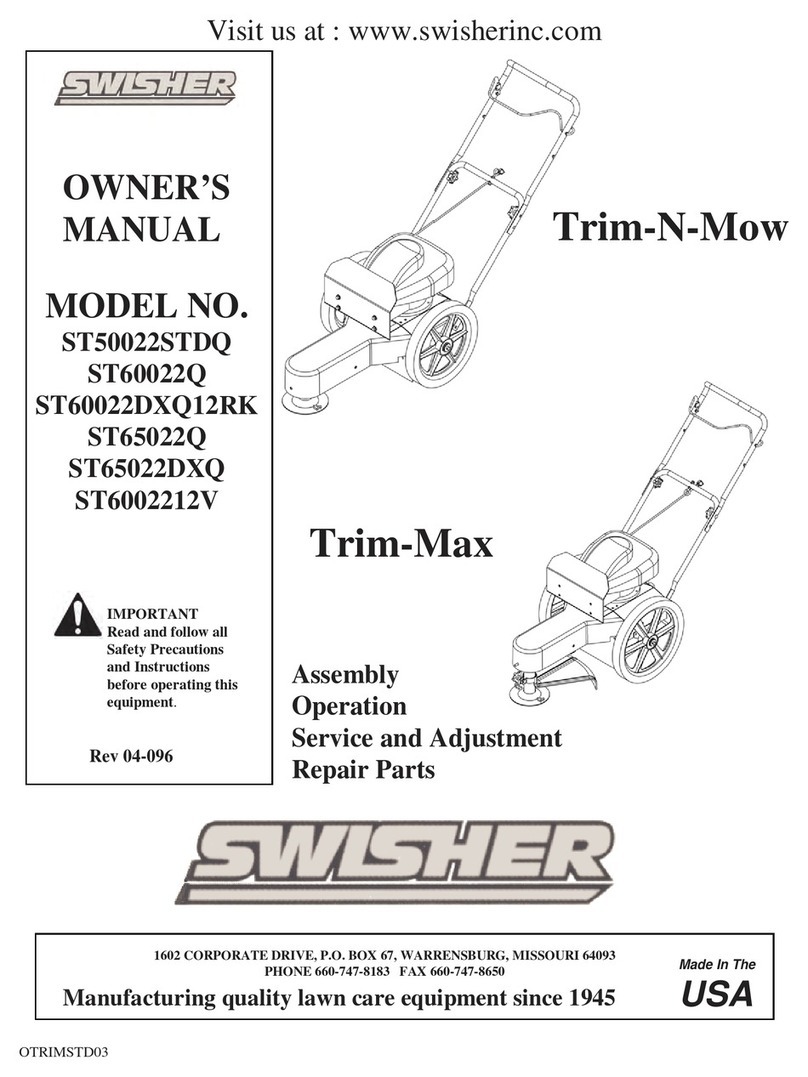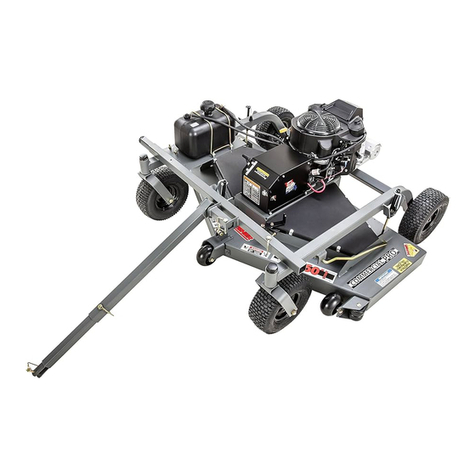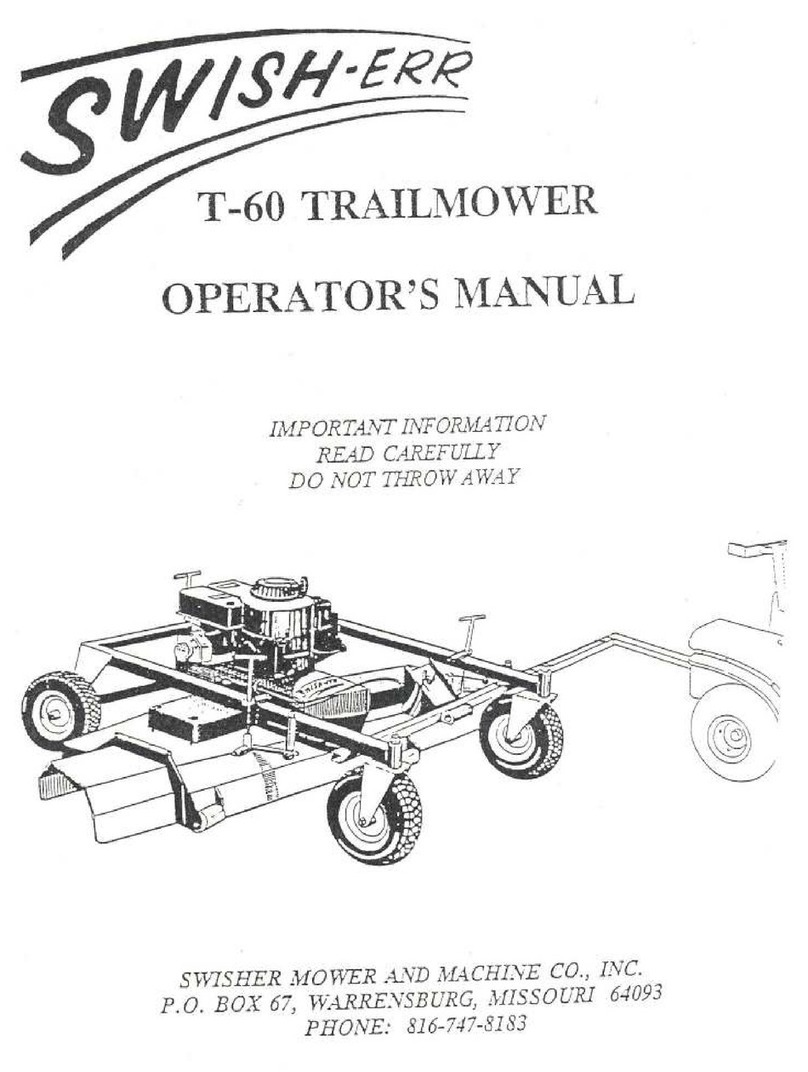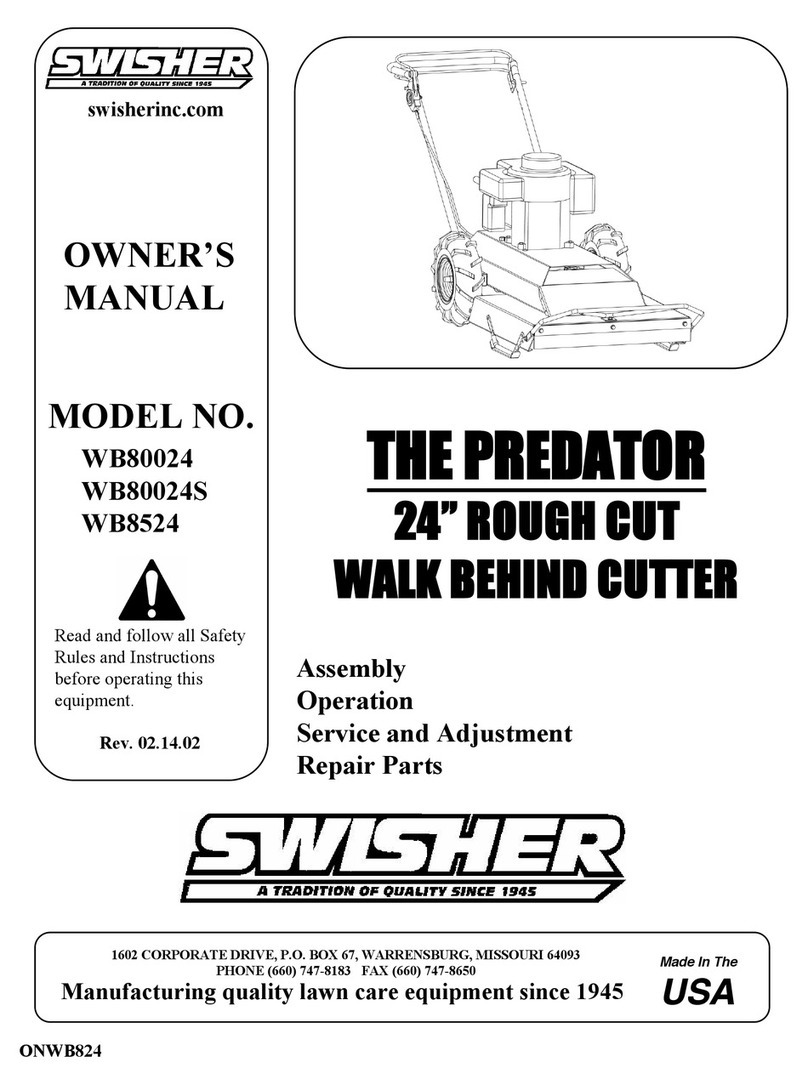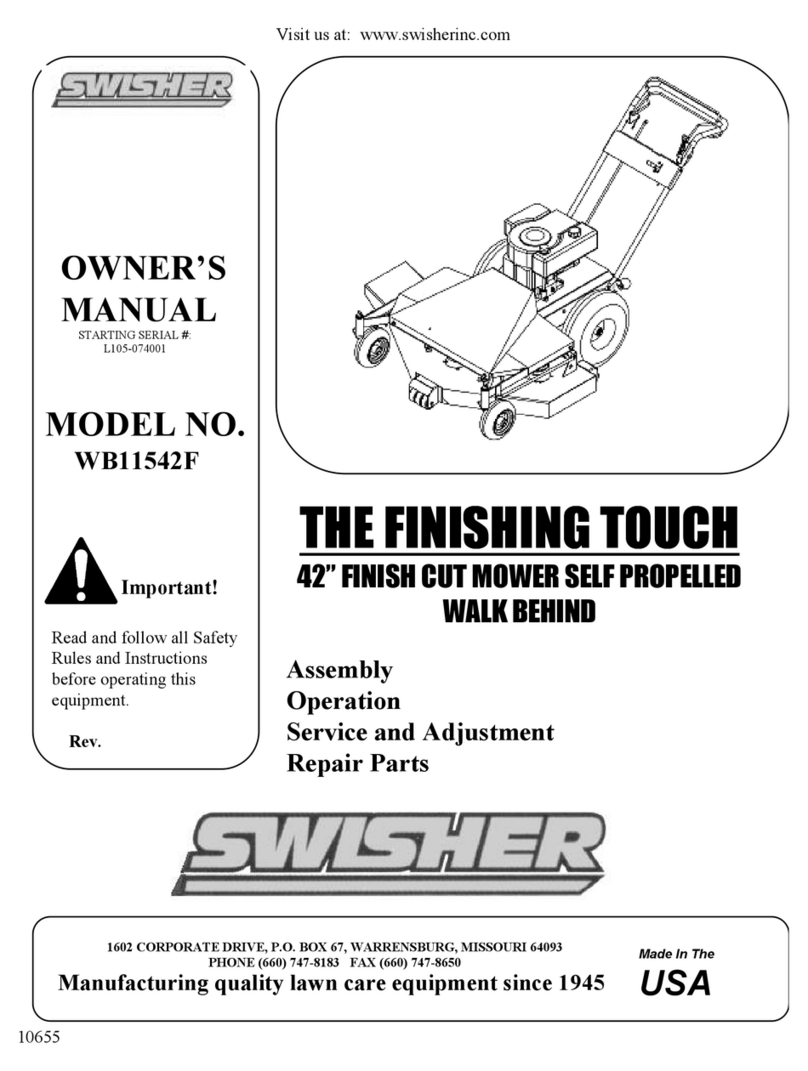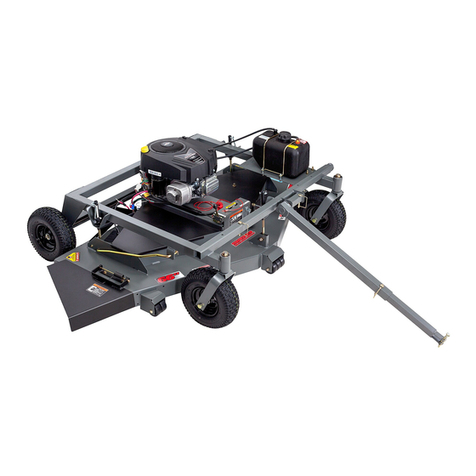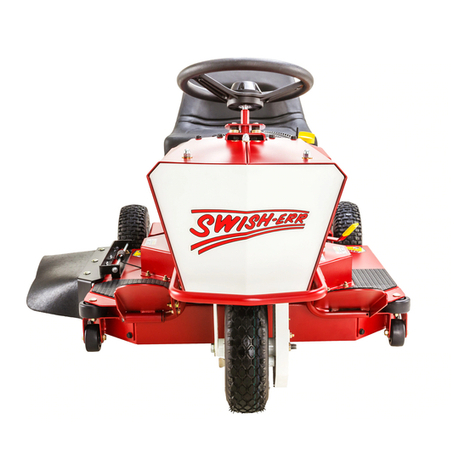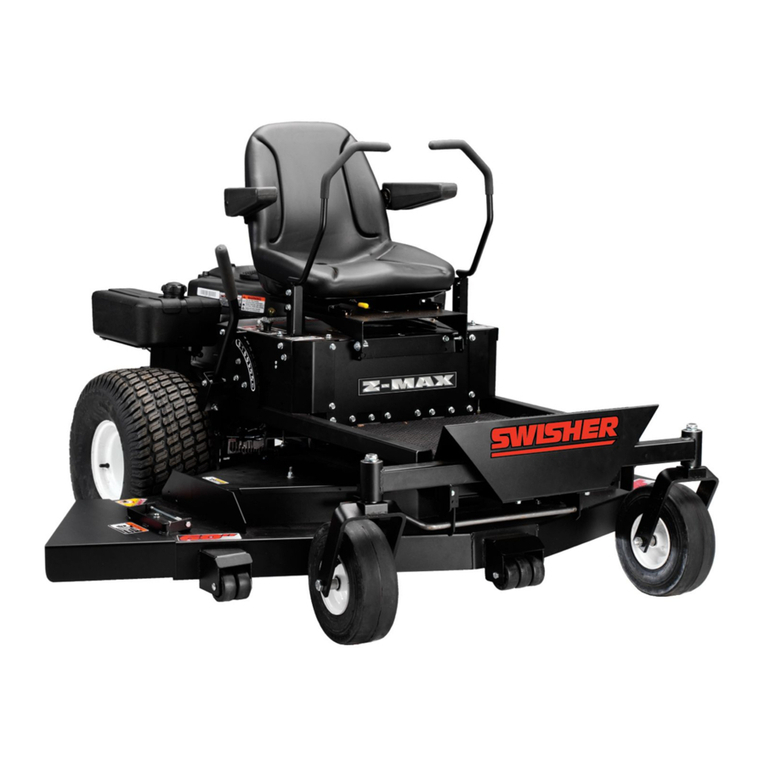DRIVE CONTROL HANDLE ADJUSTMENT
Before any adjustments are made to the drive control arms; put an equal amount
of air pressure in both rear wheel. If you push both handles forward as far as they
will go and they are straight across from each other; but one side is traveling faster
than the other; shorten the linkage on the side that is going the fastest.
If when you push both handles forward as far as they will go and the traveling
speed is the same on both sides so that you are going in a straight line; but one
handle is further forward than the other; shorten the linkage on the handle that is
further ahead.
The adjustment linkage is between the bottom of
the control arm and the hydro. There is one on each
side of the mower. To adjust, remove the hair pin at
the bottom of the control arm. Loosen the jam nut
and turn the threads in to shorten the linkage.
Reconnect the rod and hair pin and tighten the jam
nut. Test drive, and further adjust if needed.
PARKING BRAKE ADJUSTMENT
With the parking brake off; make sure the tooth arm and
the cog wheel are close to each other without touching.
Adjust the nut on the rod to achieve the clearance. Turn
the wheel by hand to see that there is no contact. Now
engage the parking brake to see if the two mate to keep
the wheel from turning. When adjustment is done;
engage the hydro and lower the jack. Repeat the
adjustment for the opposite side. Order new parts if
tooth arm or cog wheel are damaged.
The parking brake is a positive lock on the transaxle to keep
the mower stable when parked. It is not designed to be
used to stop the moving mower. Compare it to the Park
position on an automatic transmission in a car or pickup. If
it is used to stop the mower while in motion, the cog
system will be damaged. It is replaceable; but not a part
that will be covered under warranty. It does need to be
adjusted periodically.
To adjust; jack up one of the rear wheel. Disengage the
hydro by pulling back on the yellow handle down below
the rear of the engine mounting plate.
10


